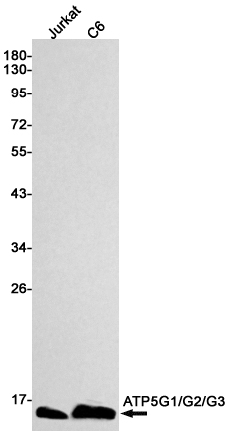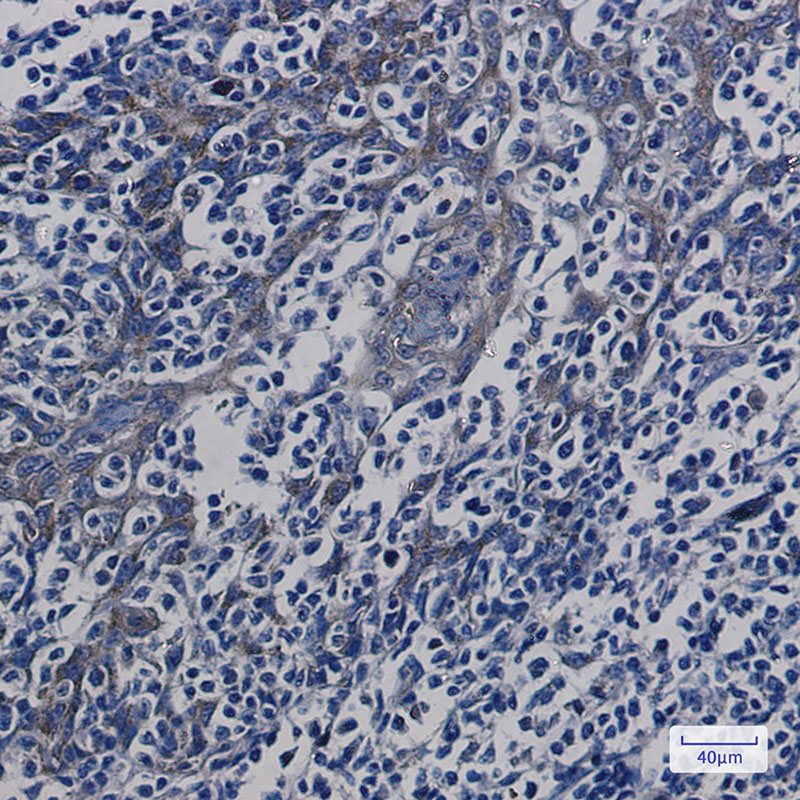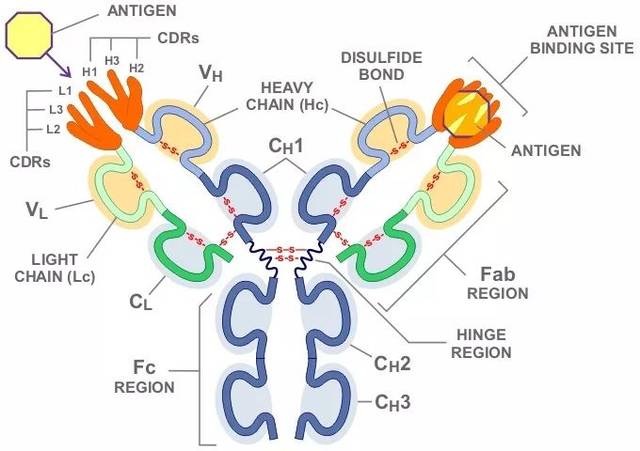Product Name :
ATP5G monoclonal antibody Background :
Mitochondrial membrane ATP synthase (F1F0 ATP synthase or Complex V) produces ATP from ADP in the presence of a proton gradient across the membrane which is generated by electron transport complexes of the respiratory chain. F-type ATPases consist of two structural domains, F1 - containing the extramembraneous catalytic core and F0 - containing the membrane proton channel, linked together by a central stalk and a peripheral stalk. During catalysis, ATP synthesis in the catalytic domain of F1 is coupled via a rotary mechanism of the central stalk subunits to proton translocation. Part of the complex F0 domain. A homomeric c-ring of probably 10 subunits is part of the complex rotary element.MiscellaneousThere are three genes which encode the mitochondrial ATP synthase proteolipid and they specify precursors with different import sequences but identical mature proteins. Is the major protein stored in the storage bodies of animals or humans affected with ceroid lipofuscinosis (Batten disease). Product :
50mM Tris-Glycine(pH 7.4), 0.15M NaCl, 40% Glycerol, 0.01% Sodium azide and 0.05% BSA Storage&Stability :
Store at 4°C short term. Aliquot and store at -20°C long term. Avoid freeze-thaw cycles. Specificity :
IgG Immunogen :
A synthetic peptide of human ATP5G1/G2/G3 Conjugate :
Unconjugated Modification :
Unmodified
ATP5G monoclonal antibody Background :
Mitochondrial membrane ATP synthase (F1F0 ATP synthase or Complex V) produces ATP from ADP in the presence of a proton gradient across the membrane which is generated by electron transport complexes of the respiratory chain. F-type ATPases consist of two structural domains, F1 - containing the extramembraneous catalytic core and F0 - containing the membrane proton channel, linked together by a central stalk and a peripheral stalk. During catalysis, ATP synthesis in the catalytic domain of F1 is coupled via a rotary mechanism of the central stalk subunits to proton translocation. Part of the complex F0 domain. A homomeric c-ring of probably 10 subunits is part of the complex rotary element.MiscellaneousThere are three genes which encode the mitochondrial ATP synthase proteolipid and they specify precursors with different import sequences but identical mature proteins. Is the major protein stored in the storage bodies of animals or humans affected with ceroid lipofuscinosis (Batten disease). Product :
50mM Tris-Glycine(pH 7.4), 0.15M NaCl, 40% Glycerol, 0.01% Sodium azide and 0.05% BSA Storage&Stability :
Store at 4°C short term. Aliquot and store at -20°C long term. Avoid freeze-thaw cycles. Specificity :
IgG Immunogen :
A synthetic peptide of human ATP5G1/G2/G3 Conjugate :
Unconjugated Modification :
Unmodified
-
 Western blot analysis of ATP5G1/G2/G3 in Jurkat, C6 lysates using ATP5G antibody.
Western blot analysis of ATP5G1/G2/G3 in Jurkat, C6 lysates using ATP5G antibody. -
 Immunohistochemistry analysis of paraffin-embedded Human tonsil using ATP5G1/G2/G3 antibody.High-pressure and temperature Sodium Citrate pH 6.0 was used for antigen retrieval.
Immunohistochemistry analysis of paraffin-embedded Human tonsil using ATP5G1/G2/G3 antibody.High-pressure and temperature Sodium Citrate pH 6.0 was used for antigen retrieval.
Bioworld Biotech only provide peptides for our antibodies and do not provide additional peptide customization services.
Price/Size :
USD 368/1mg/vial
Tips:
For phospho antibody, we provide phospho peptide(0.5mg) and non-phospho peptide(0.5mg).Describe :
Blocking peptides are peptides that bind specifically to the target antibody and block antibody binding. These peptide usually contains the epitope recognized by the antibody. Antibodies bound to the blocking peptide no longer bind to the epitope on the target protein. This mechanism is useful when non-specific binding is an issue, for example, in Western blotting (WB) and Immunohistochemistry (IHC). By comparing the staining from the blocked antibody versus the antibody alone, one can see which staining is specific; Specific binding will be absent from the western blot or IHC performed with the neutralized antibody.Formula:
Synthetic peptide was lyophilized with 100% acetonitrile and is supplied as a powder. Reconstitute with 0.1 ml DI water for a final concentration of 10 mg/ml.The purity is >90%,tested by HPLC and MS.
Storage:
The freeze-dried powder is more stable. For short time at 2-8°C. For long term storage store at -20°C.
Note :
This product is for research use only (RUO only). Not for use in diagnostic or therapeutic procedures.
 ATP5G monoclonal antibody
ATP5G monoclonal antibody  Datasheet
Datasheet COA
COA MSDS
MSDS SHIP
SHIP